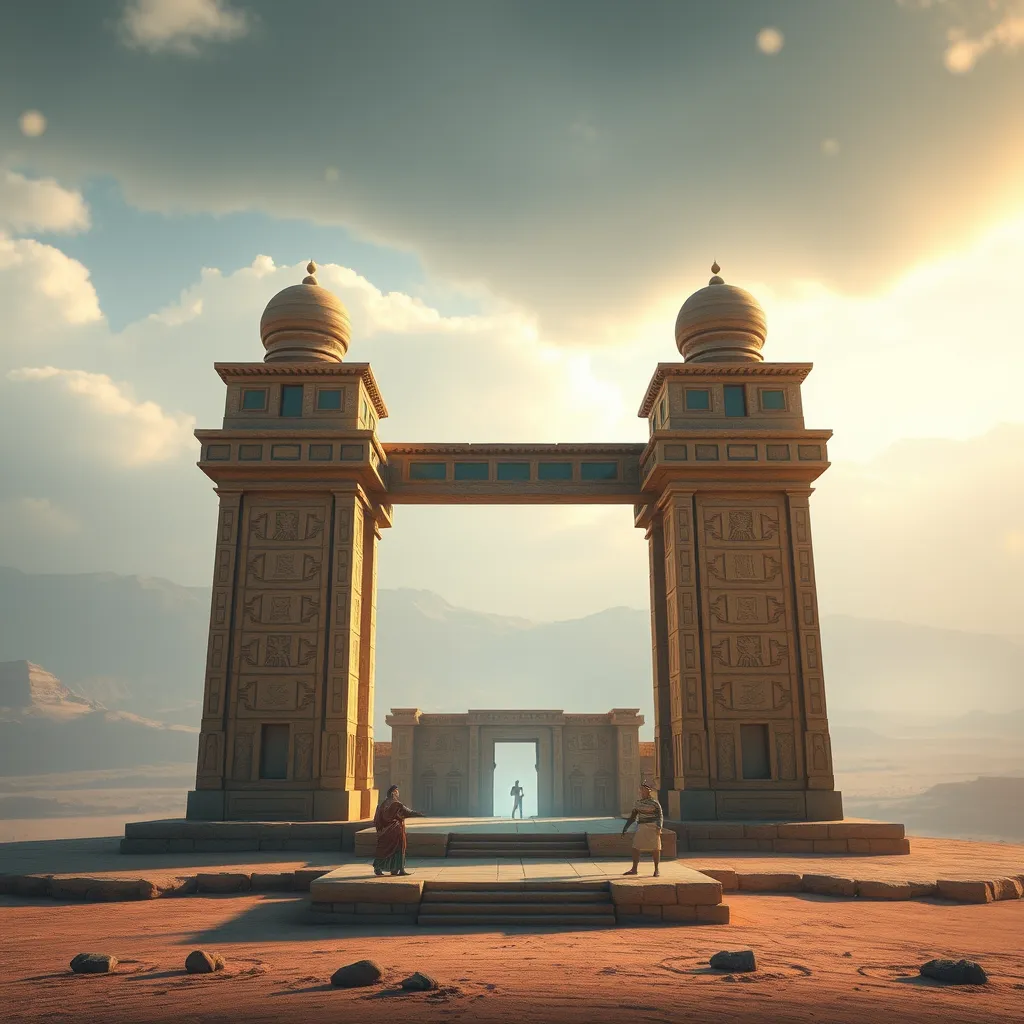The Duat: A Place of Healing and Reconciliation
I. Introduction
The Duat, known as the underworld in ancient Egyptian mythology, represents a complex and multifaceted realm beyond the earthly plane. It is more than just a place of shadow and fear; it holds significant importance as a space where souls transition to the afterlife, undergo trials, and ultimately seek healing and reconciliation.
This article aims to explore the Duat’s role as a place of healing and reconciliation, emphasizing its relevance in both ancient beliefs and modern spiritual practices.
II. Historical Context of the Duat
The concept of the Duat has its origins in the early dynastic period of ancient Egypt, evolving over millennia as beliefs about the afterlife developed. Initially perceived as a dark and treacherous space, the Duat transformed into a more nuanced realm where souls could find healing and preparation for the afterlife.
Numerous ancient Egyptian texts, such as the Pyramid Texts and the Book of the Dead, feature extensive references to the Duat, highlighting its significance in funerary practices and beliefs about the afterlife.
The Duat is often symbolized in art as a complex landscape filled with rivers, fields, and mountains, representing both the challenges and the beauty of the afterlife journey.
III. The Structure of the Duat
The Duat is characterized by its varied landscapes and realms, each with distinct features and significance. Some key aspects include:
- The River of Night: A dark river that souls must cross, often representing the boundary between life and death.
- The Field of Reeds: A paradise where the souls of the righteous could enjoy eternal peace.
- The Hall of Judgment: The space where Osiris, the god of the afterlife, weighs the hearts of the deceased against the feather of Ma’at, symbolizing truth and justice.
Key figures associated with the Duat include:
- Osiris: The god of the afterlife and resurrection.
- Isis: The goddess known for her protective and healing qualities.
- Anubis: The god of mummification and the protector of graves.
The journey through the Duat is marked by various stages and challenges, including encounters with deities, trials of strength and wisdom, and the need for protection from malevolent forces.
IV. Healing in the Duat
In ancient Egyptian culture, healing was a holistic concept encompassing both spiritual and physical dimensions. The Duat served as a place where souls could seek healing from their earthly sufferings.
Rituals and practices aimed at healing within the Duat included:
- Prayers and Offerings: Deceased individuals were often provided with spells and offerings to ensure their safe passage and healing in the afterlife.
- Rituals of Rebirth: The idea of resurrection was central to healing in the Duat, where the soul would be rejuvenated and transformed.
Case studies from ancient texts illustrate individuals who sought healing in the afterlife, emphasizing the belief that the Duat could restore harmony and balance to the soul.
V. Reconciliation in the Duat
The Duat also played a crucial role in resolving earthly conflicts and reconciling relationships. Central to this process was the concept of judgment, where individuals faced the consequences of their earthly actions.
The significance of judgment and divine forgiveness is paramount, as the heart’s weighing determines the soul’s fate. If found worthy, the soul could achieve reconciliation and peace.
Examples of reconciliation narratives in ancient texts, such as the story of Osiris and Isis, highlight themes of love, loss, and the quest for harmony beyond death.
VI. The Duat’s Influence on Modern Spirituality
In contemporary society, there has been a resurgence of interest in ancient Egyptian spirituality, with many seeking to understand the healing aspects of the Duat.
Modern interpretations often focus on the following:
- Spiritual Healing: Emphasizing the need for inner peace and resolution of past traumas.
- Ritual Practices: Many modern spiritual traditions incorporate rituals inspired by ancient Egyptian practices for healing and reconciliation.
This renewed interest reflects a broader movement towards holistic healing traditions that acknowledge the importance of spiritual dimensions in personal well-being.
VII. Lessons from the Duat for Personal Growth
The teachings of the Duat offer valuable insights applicable to modern life, particularly in the realms of healing and reconciliation. Key lessons include:
- Facing One’s Past: Acknowledging and addressing past traumas is essential for personal transformation.
- Holistic Healing: Embracing a comprehensive approach to healing that includes emotional, spiritual, and physical aspects.
- Forgiveness: The act of forgiving oneself and others is a crucial step towards achieving peace and reconciliation.
By embracing these lessons, individuals can embark on their own journeys of healing and growth, inspired by the teachings of the Duat.
VIII. Conclusion
The Duat stands as a profound symbol of healing and reconciliation, offering insights that resonate even in contemporary society. Its significance extends beyond ancient beliefs, inviting individuals to reflect on their own paths towards healing and understanding.
As we navigate the complexities of modern life, the teachings of the Duat encourage us to seek harmony within ourselves and with others. We are invited to explore our journeys of healing and reconciliation, guided by the wisdom of the ancient past.




